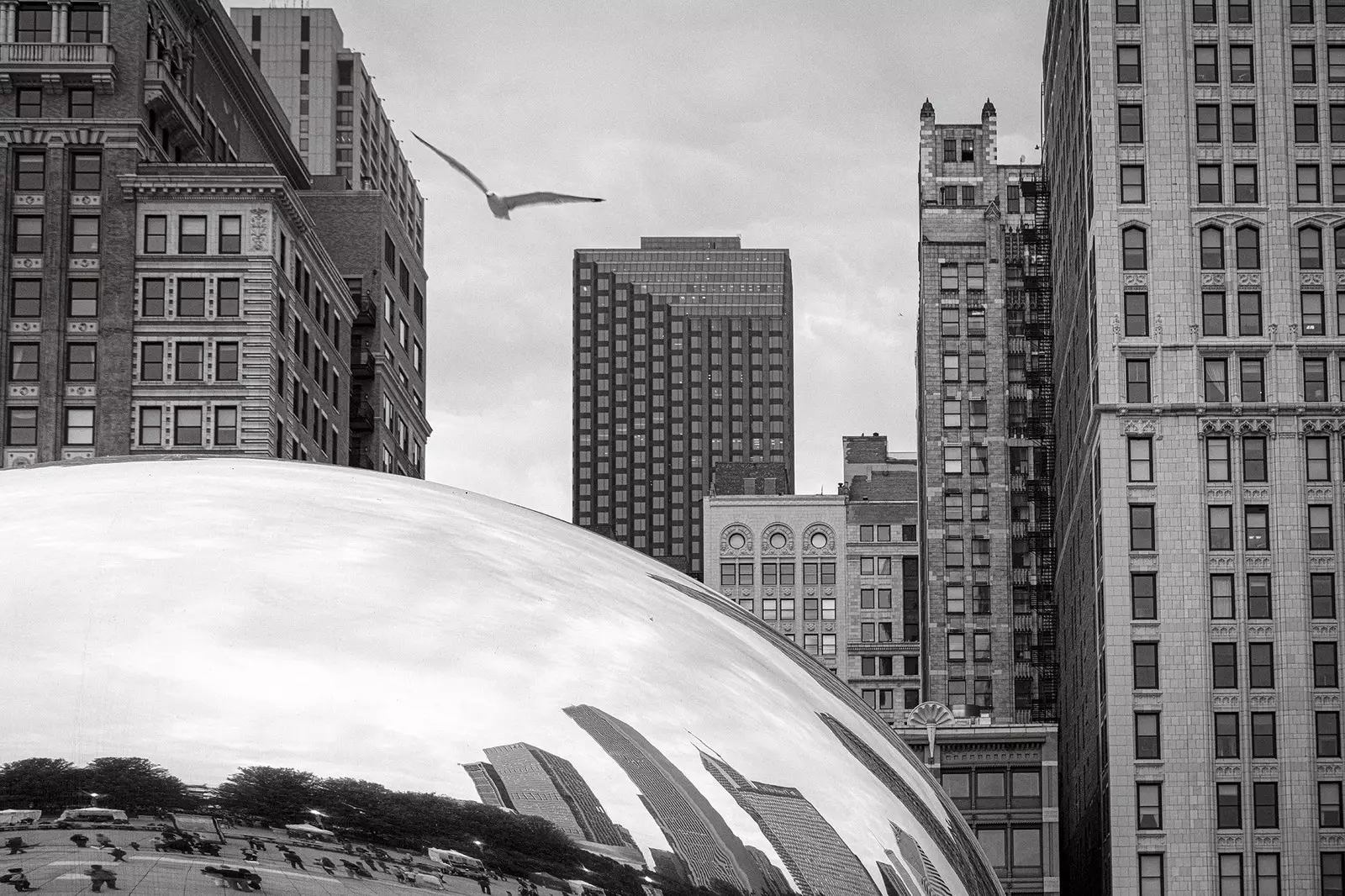
Sculpture 'Cloud Gate', by Anish Kappor
confluence of Michigan Avenue and East Adam Street, navel of Chicago . A couple gets into a car next to the road sign that marks the start of Route 66 and begins the journey of almost 4,000 kilometers to The Angels along the Mother Road.
A step away, someone contemplates Nighthawks at the Art Institute of Chicago, Hopper's most admired and parodied painting, a masterpiece of 20th century art with its scene of nocturnal birds in a diner that portrays the loneliness of the American dream.
At that very moment and on the same floor of the museum, but from the large windows of the contemporary art galleries, among Andy Warhol's Elizabeth Taylor, Jackie Kennedy and Mona Lisa, s e sees the stage built by Frank Gehry in Millennium Park, where a musician comes on to play the blues.
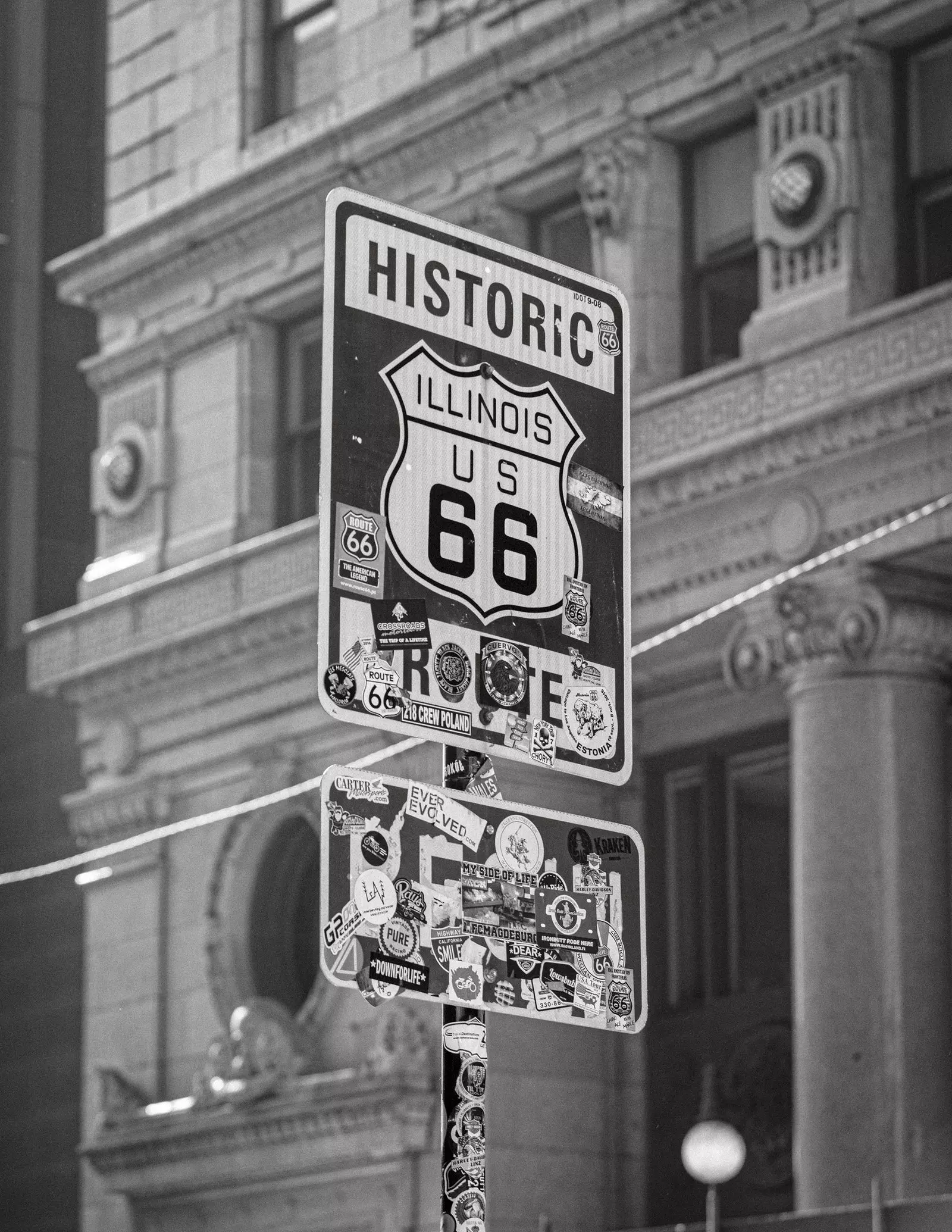
Historic sign marking the start of Route 66
This very cinematic sequence is a regular sight of Chicago. Three fundamental icons of American culture in just an inch of land. As Norman Mailer said, “If New York is the capital of the world, Chicago is the capital of America”, and the blues is in charge of setting the rhythm.
This rural music that born in the Mississippi delta came to Illinois with the diaspora of thousands of African-Americans who, after World War I, left the racist states of the south in search of a decent life in the shadow of the prosperous industry of the north.
In Chicago, around the same time the city ushered in a new era in 1942 by producing the first nuclear chain reaction, the blues went electric. The key venue was the Chess Records studio, the first designed to record this style of music.
Here he ruled Muddy Waters just after the end of World War II and, with it, Willie Dixon, Howlin' Wolf, John Lee Hooker, Bo Diddley, the largest. chuck berry appeared later. Also Etta James , the great lady of the Chicago stamp. Then the blues had a son and they called it rock & roll, as Muddy Waters wrote.
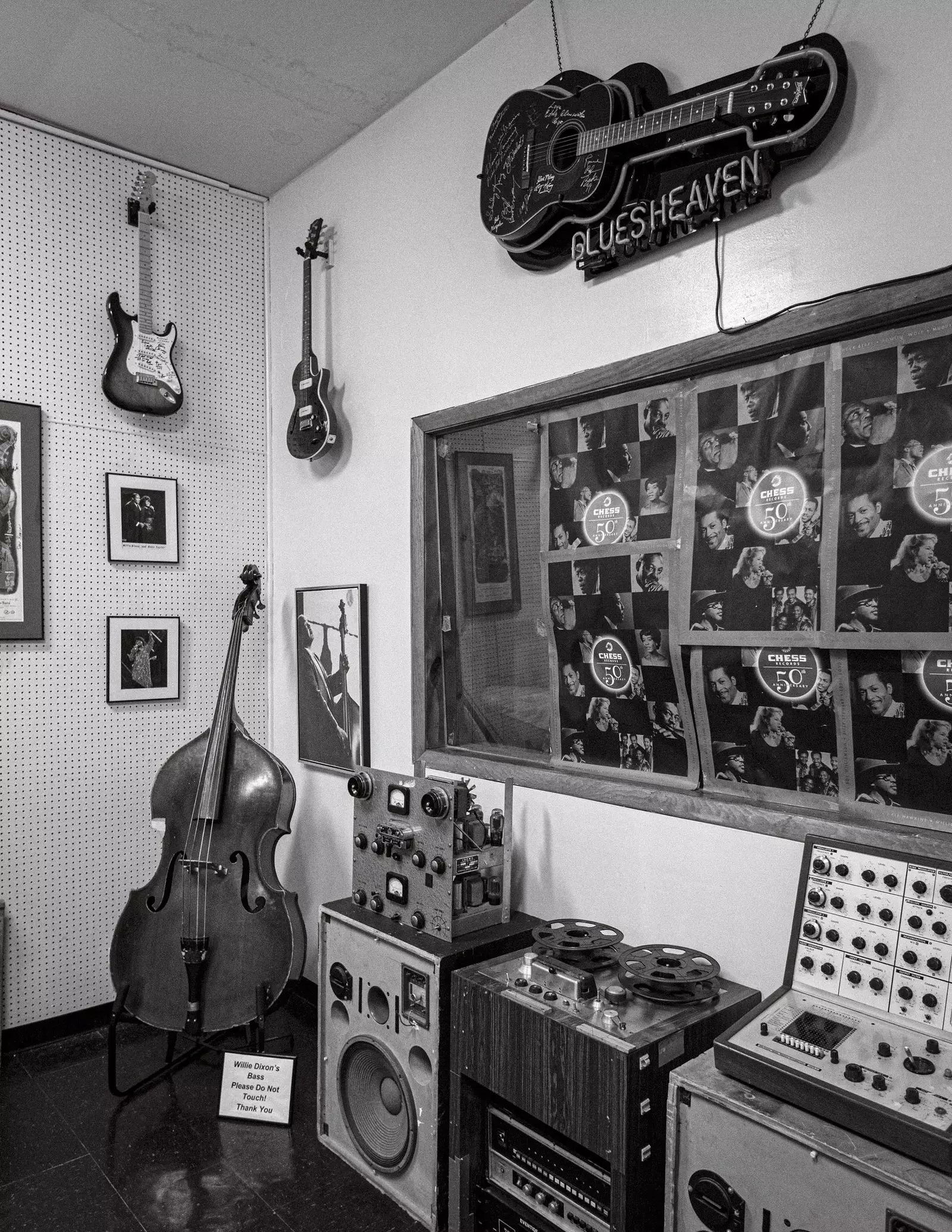
Chess Records Recording Studio
The main debtors of 'Sound Chess Records' was the Rolling Stones, that on their first tour of the United States in 1964 they did not miss the opportunity to visit the record company. His own name comes from a Muddy Waters theme. Here they recorded 2120 South Michigan Avenue , which is the original location where the studio is still located, one of the main arteries of Chicago.
Today it is a museum, but for a few months it has returned to producing as a recording studio. After the sale of the label in 1975, the building was abandoned until 1993, when Willie Dixon's widow bought it to create here the Blues Heaven Foundation, foundation, museum and cultural center dedicated to tell the story of the blues and protect local musicians.
Muddy Waters and the rest of the black bluesmen collected their debt: thanks to the Stones – who returned to record in the studio on two other occasions – The Beatles, Led Zeppelin and other bands of the British nobility, s u music and the records they recorded on Chess Records came out of the fringes and became popular all over the world.
Muddy Waters is to blues what Camarón de la Isla is to flamenco, a revolutionary. “Like flamenco, blues is popular music, it is not elitist, it comes from the people”, Mark Kelly explains next to the Jay Pritzker Pavilion, the stage designed by Frank Gehry that emerges like a gigantic steel spider in the middle of Millennium Park.
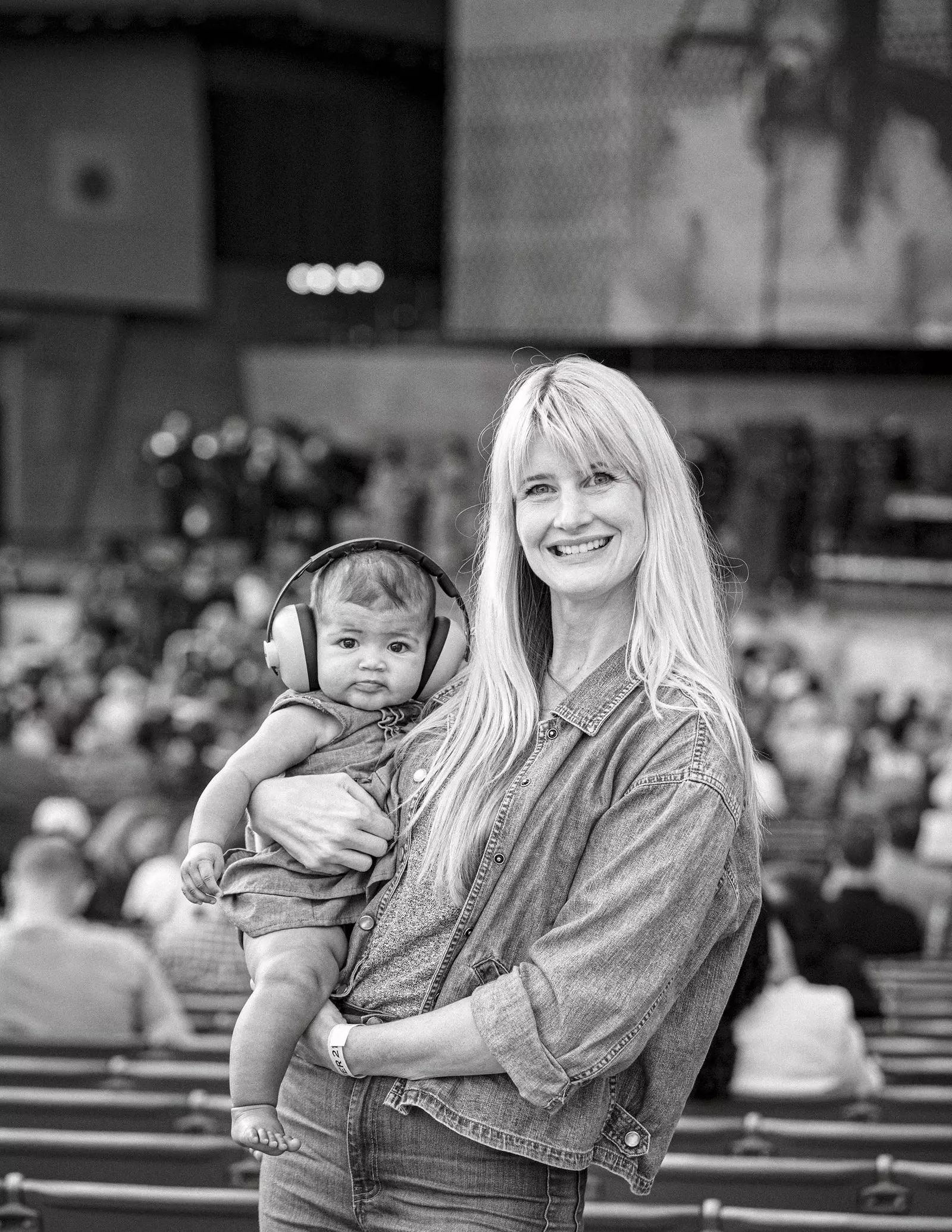
A woman attends the blues festival with her baby
This park dedicated to the arts in Downtown Chicago hosts every June the Chicago Blues Festival. For three days the concerts on outdoor stages, between barbecue smells and in a landscape flanked by skyscrapers that inevitably reminds of Central Park. Although Chicago was the city that invented skyscrapers.
The head of the festival is Mark Kelly: “It's about teaching the legacy of black music to the world, not doing business. And to support the blues ecosystem in the city”.
The Millennium Park is an open-air museum with works such as the Crown Fountain by Jaume Plensa and the sculpture Cloud Gate of Anish Kapoor, the famous silver bean. Next to it, **Rosa's Lounge club** has erected a portable stage. But the usual one is somewhat removed from the hustle and bustle of Downtown, to the northwest of the city. A true temple of blues in Chicago, as Obama well knows.
If Chess Records was founded by two first-generation Polish immigrant brothers, Leonard and Phil Czyż (Chess in English), Rosa's is owned by Tony Mangiullo, an Italian immigrant. “I arrived in 1978 without knowing how to run a bar, how to open a business in the United States. I just knew I liked the blues. And here you see me, I've been doing it for 35 years” , tells in the dark of the room before Christone 'Kingfish' Ingram comes on stage.
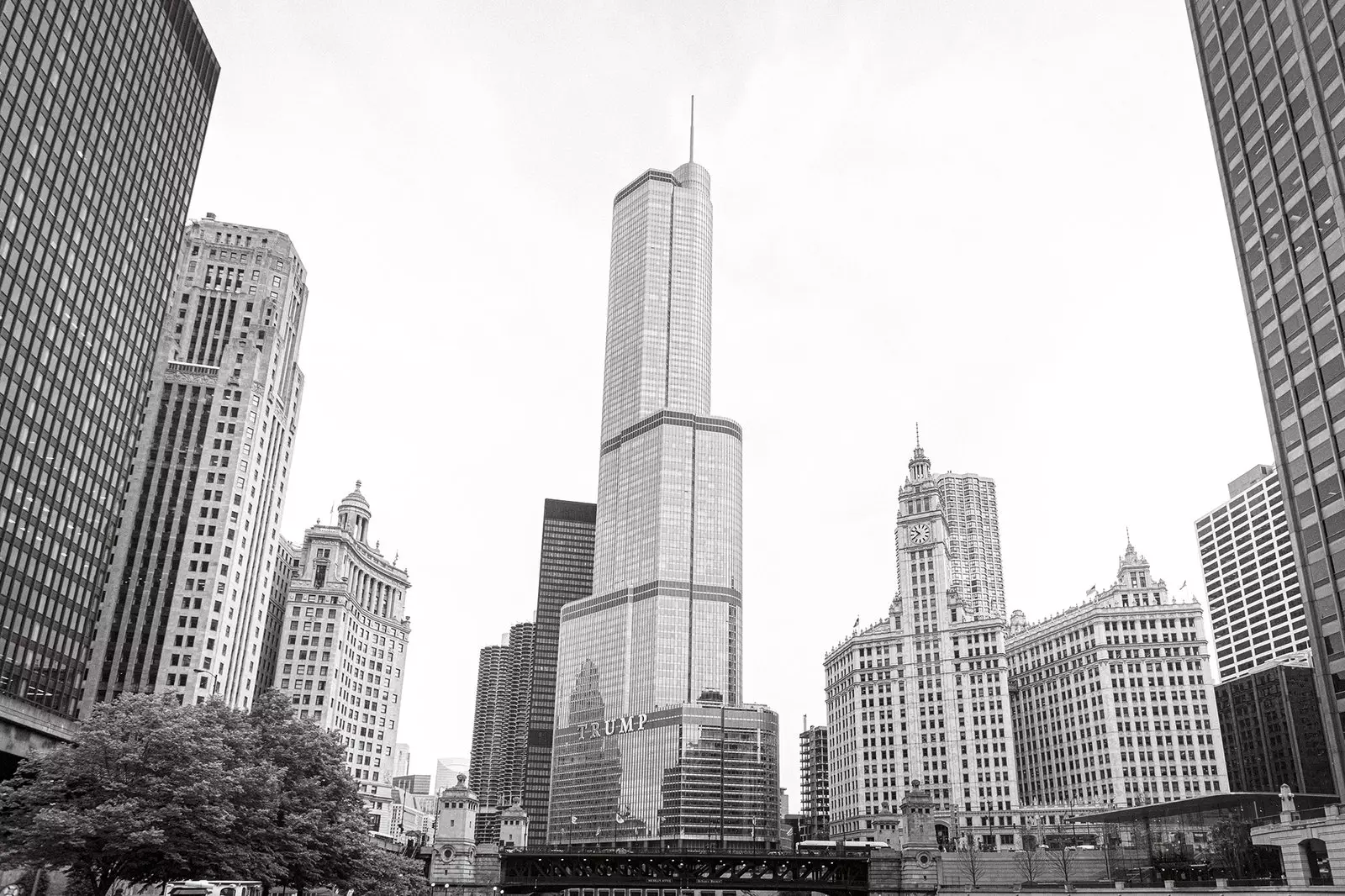
Downtown Panoramic
The Art Institute of Chicago it is for many the most important art center in the United States. The modern wing, dedicated to contemporary art, is designed by Renzo Piano. In the room that exhibits Hopper's Nighthawks (1942), hang **Blues (1929) and Nightlife (1943) **, by the African-American painter Archibald John Motley Jr., who capture all the vitality of a neighborhood club, the first in Paris and the second in Bronzeville. Motley was the first black artist to exhibit at this coliseum of art. He is the best chronicler of the blues and jazz atmospheres of the black suburbs of Chicago.
South of the city, Bronzeville, known as The Black Metropolis, grew up as one of the neighborhoods where the Afro-American diaspora settled. In the 1960s he led the fight for civil rights and further south, in Hyde Park, Barack Obama began his political career , which still maintains his residence on Greenwood Avenue. in bronzeville louis armstrong lived , who frequented the Sunset Café at 315 E. 35th Street, where Billie Holiday, Gene Krupa, Sarah Vaughan, Ella Fitzge-rald, Benny Goodman acted.
From the Sunset Cafe only his murals remain in the back of a haberdashery. As if they were cave paintings, the ancient frescoes that adorned the stage coexist with socks, bras and wigs. But there are other temples that remain irreducible.
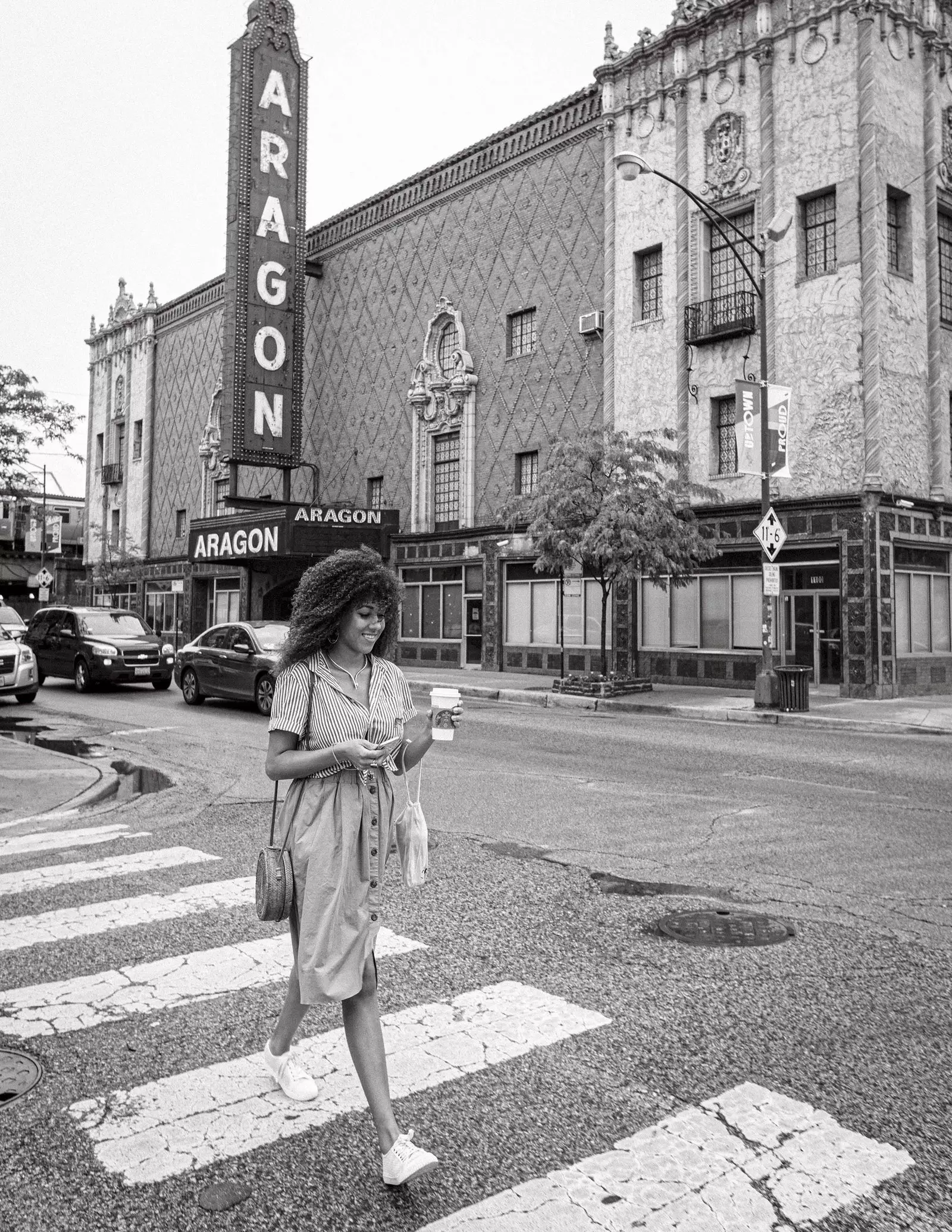
The emblematic Aragon theater
Interestingly, the same city that electrified the blues It was the one that made jazz subtle. In Chicago they developed the avant-garde of black music and roots music.
The Green Mill Cocktail Lounge It is located to the north of the city next to the legendary Uptown Theatre, which in 1925 was the largest cinema in the United States, with almost 4,500 seats. and very close to Aragon Ballroom, which opened the following year with a capacity for 5,000 people and a ballroom that imitates a Spanish villa. Legend has it that the basement was linked to the Green Mill by secret tunnels during the Prohibition years. The Green Mill had been here since 1907, but it grew as_o speakeasy_, a dive linked to antiques dealer Alphonse Gabriel Capone, and got big as a jazz joint.
There are clubs that, like good songs, become over the years jazz standards. And that more than a century later keep listening to that music here every night, in a country like the United States that sheds its skin every five years, it's a miracle.
And as it happens with the blues, Chicago has also had its jazz festival since 1979 with free performances in Millennium Park and the Chicago Cultural Center. Every September, when a couple starts out on Route 66 and someone watches Hopper's Nighthawks, what sounds from the Millennium stage is jazz.
***** _This report was published in **number 131 of Condé Nast Traveler Magazine (September)**. Subscribe to the printed edition (11 printed issues and a digital version for €24.75, by calling 902 53 55 57 or from our website). The September issue of Condé Nast Traveler is available in its digital version to enjoy on your preferred device. _
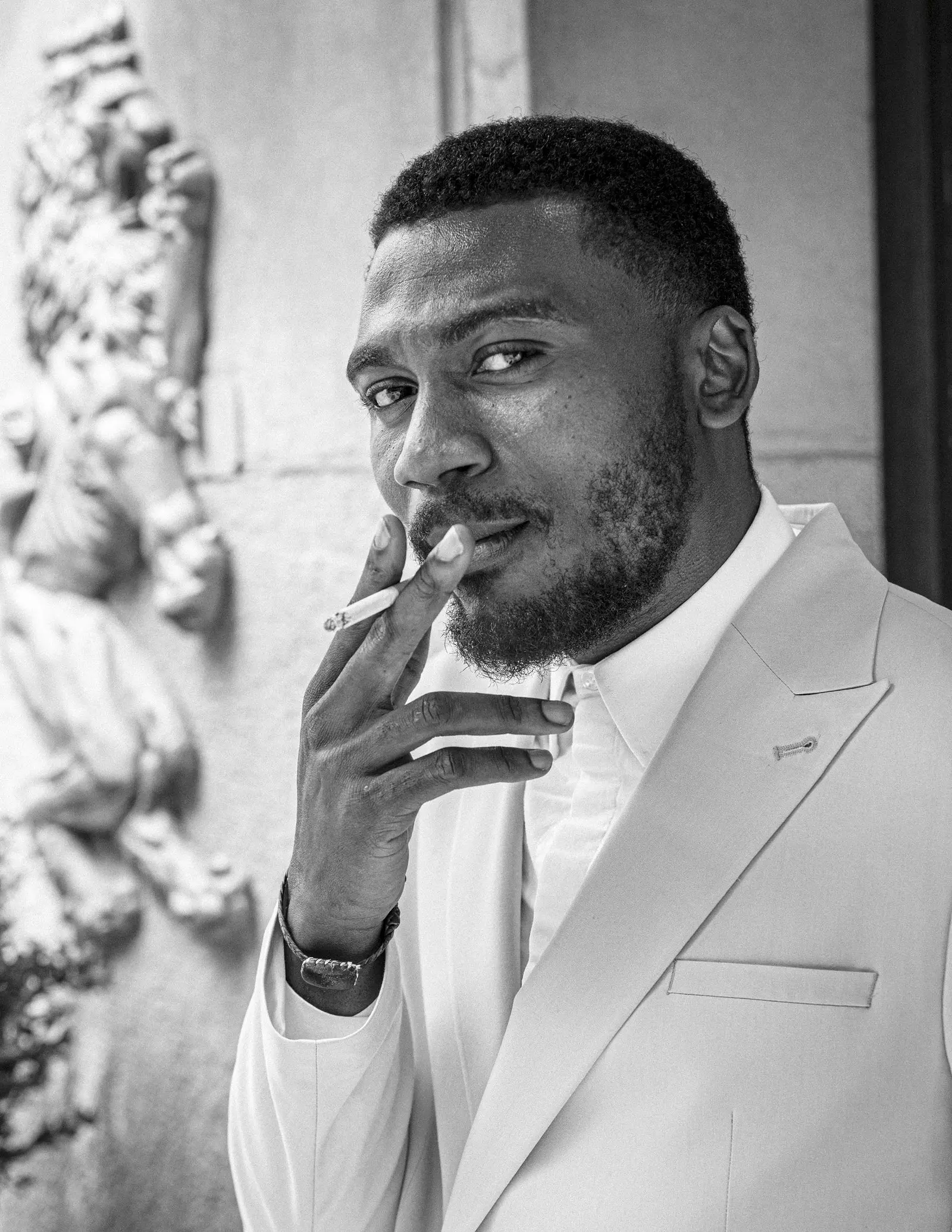
A nice guy whom the authors of this report met on the street
